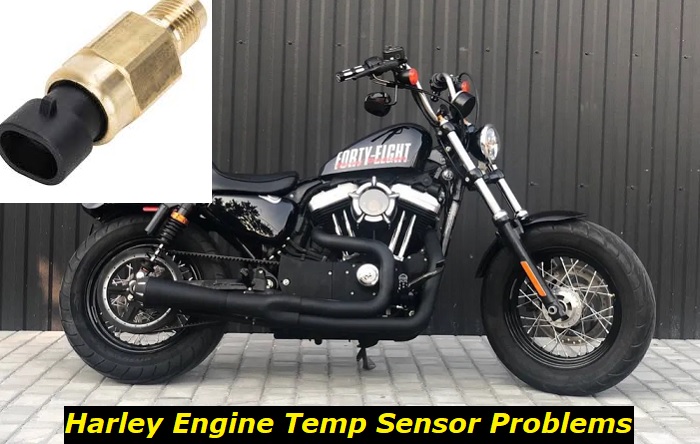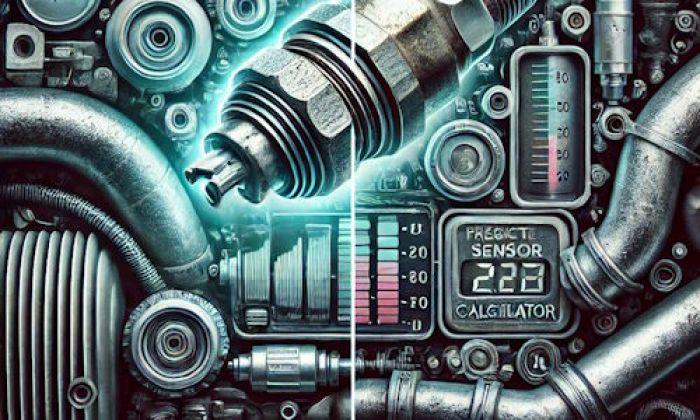A malfunctioning engine temperature sensor could mean all sorts of trouble for your Harley motorbike. It is a crucial component that helps your ECU determine the correct amount of fuel supply for your engine under varying load conditions. When the sensor begins to malfunction, you are likely to experience a wide range of symptoms.
If your bike suddenly has trouble starting, is consuming more fuel than usual, is idling roughly, or losing power intermittently, it is advisable to look into your engine temperature sensor. Judging by the number of complaints riders have posted on Harley Davidson forums, you are not facing this problem alone.

If you suspect your engine temperature sensor is not working as it should, this article will explain everything you need to know about this problem. We will take you through the following:
- Why your engine temperature sensor is vital to your Harley engine's optimal functioning
- How to spot the signs of a failing engine temperature sensor
- What to do when your engine temperature sensor malfunctions
- How to find your Harley's the engine temperature sensor
- Causes of engine temperature sensor malfunction
The Function of Your Engine Temperature Sensor
Engine temperature sensors do not detect the temperature of your engine directly. Instead, the sensor detects the temperature of your Harley's coolant. The sensor uses electrical resistance principles to detect the temperature of the coolant. It then relays this information to your ECU.
The optimal operation of the sensor ensures the ECU releases the correct amount of fuel for your engine's efficient performance. Your ECU uses this data to calculate the optimal among of fuel to be injected and the precise ignition timing.
When your engine temperature sensor is damaged, it will relay incorrect information to the ECU, which calculates the wrong ignition time and fuel injection. This will cause your Harley to misbehave in the manner described below.
Symptoms of a Faulty Engine Temperature Sensor in Your Harley
Now that you know your sensor's crucial function let us look at some typical signs that it is going haywire.
1. Your Harley's Warning Signs Will Turn On
The dashboard lights on your Harley should not be ignored. They only light up when the ECU detects a significant internal malfunction of some or one of your components.
If your Harley Davidson's ominous check engine light is displaying, you should take it to a licensed mechanic as soon as possible. A yellow warning light may also come on if your engine temperature goes higher than the recommended range.
2. Your Harley Has Poor Mileage
When a defective sensor sends the incorrect signal to the ECU, e.g. a false cold reading, a disproportionate fuel-air mixture will increase your Harley's fuel consumption. Gas is already so expensive. The last thing you need is your Harley developing a thirst for the back gold.
Unfortunately, this is bound to happen if your Harley has a defective engine temperature sensor. Poor mileage is an urgent symptom that something is wrong with your engine. This problem costs you money every mile you ignore it.
3. Black or Gray Smoke Pouring Out of Your Harley's Exhaust
The disproportionate ratio of fuel to air in your Harley's engine will also cause thick black or grey smoke. Black smoke indicates that your bike is running too rich and complicating the combustion process. It is caused by excessive oil burning in your exhaust pipe.
4. Your Harley Suffers Frequent Hard Starts and/or Rough Idles
Your Harley engine needs the right spark timing and fuel-air mixture to start flawlessly every time. If your failing engine temperature sensors cause the ECU gives the wrong instructions, your Harley will face hard starts and/or rough idling. Rough idling may cause your bike to vibrate or lose power intermittently.
5. Your Harley Engine is Underperforming
Engines are very sensitive and react poorly to incorrect fuel-air mixtures. Your Harley is no different. That lack of power you noticed may be tied to a malfunctioning engine temperature sensor.
How to Locate the Engine Temperature Sensor in your Harley
Before we get into troubleshooting, you need to know where your engine temperature sensor is located and how to remove it. Your Harley's temperature sensor looks like a spark plug with a plastic oval end. It is located behind the horn, on the back of your front cylinder.
Is Your Engine Temperature Sensor Properly Secured?
Before you remove the sensor, check that it is secured in place. For some riders, their engine temperature sensor malfunction was caused by the sensor not being properly placed on the factory floor. When this happens, continuous riding makes the engine temperature sensor even looser.
Apparently, your engine temperature sensor has a rubber boot, making it tough to secure the sensor to the electrical connector. If your engine temperature sensor wasn't pushed all the way in, a firm yank is all it takes to displace it.
Eventually, the sensor begins to malfunction even though it is not defective. Riders facing this challenge often buy a replacement part without considering that the installation, not the sensor is the real problem. Securing the sensor afresh only takes five minutes. Be sure to inspect and test it for any defects before reinstalling it.
Locating the Sensor
You need a three-quarter-inch deep well socket to remove the engine temperature sensors from where it is safely ensconced. If you do not have a deep well, you can modify a three-quarter spark plug socket using a ? inch hex at the top and shaving off a quarter inch from the bottom and top using a cutting wheel. This will give you the clearance necessary to get between the cylinders.
Once you have all the right tools, start by removing the horn. You will lift the rubber cover and lift the clip underneath to free the wire it holds. Remove the wire and use the ? inch wrench to free your sensor. Remove your tools, then spin out your sensor. Take care not to cross-thread the fine brass threads on your sensor.
How to Troubleshoot Your Malfunctioning Engine Temperature Sensor
Troubleshooting your malfunctioning Harley engine sensor is simpler than you'd think. Replacing it is pretty cheap and simple, too, should it come to that. Here is how to troubleshoot your malfunctioning engine temperature sensor:
- Begin by consulting your owner's manual for any troubleshooting or maintenance instructions. Only your owner's manual can reveal the reading ranges for the tests that you or a professional mechanic will perform.
- Use an ODB scanner to search for related trouble codes. A malfunctioning engine temperature sensor is likely to show the P0118 code.
- Check the live temperature reading versus the ohm value your sensor picks up. If the values are beyond the range specified in your owner's manual, your next step should be to check the wiring. Repair any loose and corroded wiring. Should the engine temperature sensor continue to malfunction, replacing, it may be your only alternative.
- If the OBD2 scanners do not detect any codes or odd temperature settings, this test should help. Check how long your Harley's engine takes to start up with the sensor connected. Allow your engine to cool, and disconnect your sensor from the head. Plug an electrical connector in its place. Place your sensor far from the engine heat and run your engine until it is hot again. If the engine takes longer to malfunction the second time, you can safely conclude that your engine temperature sensor is the root of the problem.
- Suppose your troubleshooting does not conclusively point to the engine temperature sensor malfunctioning. In that case, it may be necessary to visit your dealership or a reliable mechanic with plenty of experience fixing Harleys.
Cost of Replacing and Repairing Your Engine Temperature Sensor
Buying a new engine temperature sensor will cost about $20, depending on your Harley's model. Labor costs vary by region, but this simple job costs about $50. If your Harley was diagnosed at the auto repair shop, you could expect to pay a little extra.
Conclusion
Your engine temperature sensor is one of those components that are cheap enough to replace without a second thought. Even better, riders with pretty basic DIY skills and a toolset should have no problem replacing the sensor. Rather than allow a malfunctioning sensor to make your Harley unreliable and cost you a fortune in engine repairs, why not just get a new one and be done with it?
About the authors
The CarAraC research team is composed of seasoned auto mechanics and automotive industry professionals, including individuals with advanced degrees and certifications in their field. Our team members boast prestigious credentials, reflecting their extensive knowledge and skills. These qualifications include: IMI: Institute of the Motor Industry, ASE-Certified Master Automobile Technicians; Coventry University, Graduate of MA in Automotive Journalism; Politecnico di Torino, Italy, MS Automotive Engineering; Ss. Cyril and Methodius University in Skopje, Mechanical University in Skopje; TOC Automotive College; DHA Suffa University, Department of Mechanical Engineering






Add comment